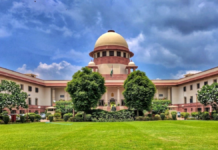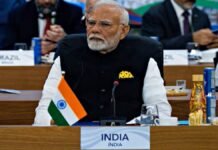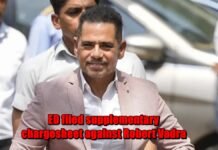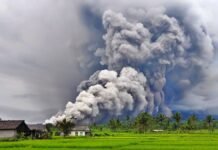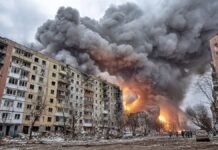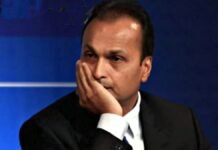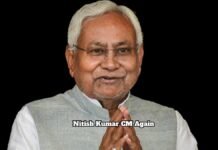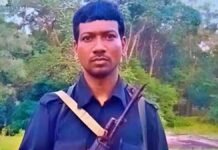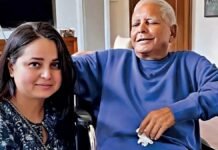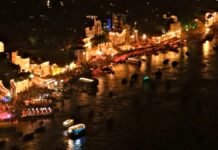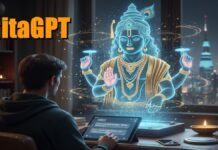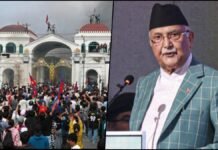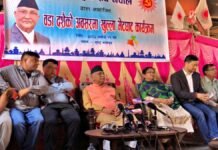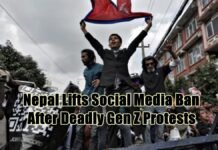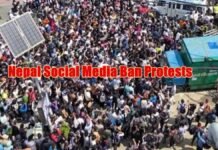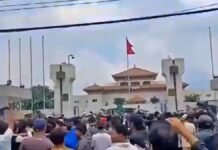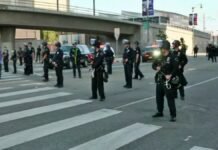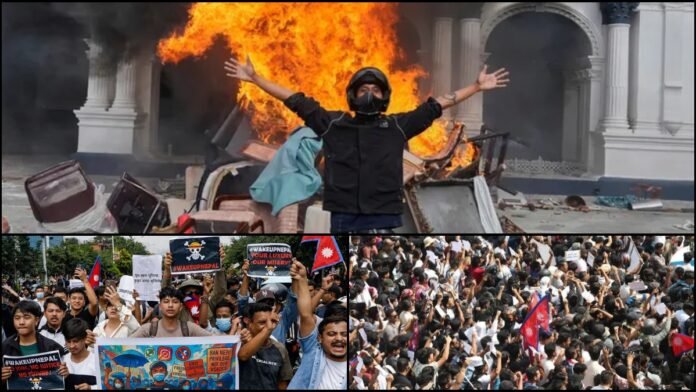
Key Points
- Gen-Z protesters clashed with CPN-UML supporters in Simara, Bara district on November 19-20, 2025, injuring at least seven youth activists
- Curfew imposed from 1 pm to 8 pm local time on Thursday, November 20, with all public gatherings banned in Bara district
- September 2025 uprising killed 17 protesters when police opened fire, leading to PM KP Sharma Oli’s resignation and appointment of former Chief Justice Sushila Karki as interim PM
- CPN-UML party conducting nationwide protests demanding reinstatement of House of Representatives dissolved on September 12
- Human Rights Watch report documents police used “disproportionate force” and “indiscriminately fired” on September 8 protesters, while mobs burned parliament, Supreme Court, and freed thousands of prisoners
The Gen-Z movement has erupted once again in Nepal, forcing curfews to be imposed in several areas just two months after a violent uprising in September toppled the government of then-Prime Minister KP Sharma Oli. The previous Gen-Z uprising on September 8-9, 2025 turned deadly when security forces opened fire on protesters, killing at least 17 people, and mobs subsequently set fire to parliament, the Supreme Court, the presidential palace, and other government buildings.
Following that political upheaval and violence, former Chief Justice Sushila Karki was appointed interim Prime Minister on September 12, 2025, with a mandate to guide the country toward fresh elections scheduled for March 5, 2026. Now, new clashes are emerging between supporters of the ousted regime and young protesters, threatening to reignite the widespread unrest that nearly destroyed Nepal’s constitutional order.
Ban on All Public Gatherings in Bara District
Due to renewed youth movement tensions in the country’s Bara district, particularly in the Simara area near the airport, the district administration has banned all public gatherings and imposed strict curfew measures. The situation escalated dramatically when direct clashes broke out between Gen Z members and supporters of the Communist Party of Nepal-Unified Marxist Leninist (CPN-UML), a party led by former Prime Minister KP Sharma Oli.
Gen Z demonstrators returned to the streets of Nepal’s Bara district on Thursday, November 20, reigniting tensions for a second straight day as confrontations with CPN-UML cadres intensified. The unrest began on Wednesday, November 19, when a group of 10-12 young Gen-Z activists gathered peacefully at Simara Chowk near the airport but were allegedly attacked by CPN-UML party workers, leaving seven youths injured.
🇳🇵 Massive Gen-Z Protests Rock Nepal
— AsiaWarZone (@AsiaWarZone) November 20, 2025
Fresh youth-led unrest erupts across multiple cities, forcing authorities to impose curfew. Protesters clashed with police, with several incidents of Gen-Z mobs attacking security personnel. pic.twitter.com/7UZeSVfwuP
Violent Clashes Near Simara Airport
Tensions escalated sharply in Nepal on Wednesday when rallies of Gen-Z protesters and CPN-UML workers clashed violently in the Simara area of Bara district. Following the violent confrontations between the two sides, the district administration imposed a curfew in several areas, including the sensitive zone around Simara airport. Citing the urgent need to maintain law and order and ensure public safety, the District Administration Office stated that the curfew would remain in effect from 1:00 p.m. to 8:00 p.m. local time on Thursday, November 20.
Gen-Z leader Samrat Upadhyay, 21, a resident of Simara in Bara, provided a detailed account of the incident, stating that “a group of 10-12 youths had gathered peacefully when CPN-UML cadres allegedly attacked them, leaving seven injured, including myself”. He added, “Our demand is simple, arrest Mahesh Basnet and UML cadres who launched a brutal attack on us today, injuring at least seven of us”. The injured Gen-Z supporters filed a formal complaint against six UML cadres at the local police station.
Interim Prime Minister’s Peace Message
Nepal’s acting Prime Minister Sushila Karki has appealed to the youth associated with the Gen-Z movement to exercise restraint and adopt a peaceful approach to expressing their grievances. Karki, who was appointed interim Prime Minister after the deadly September uprising that forced Oli’s resignation, emphasized the importance of maintaining democratic norms during the transition period.
She also urged all political parties, including the CPN-UML, to refrain from unnecessary provocation and maintain faith in the democratic system ahead of the general elections scheduled for March 5, 2026. According to Nepal Police spokesperson Abi Narayan Kafle, the situation normalized somewhat on Thursday afternoon, and authorities confirmed that no one was seriously injured in the latest clashes, though seven Gen-Z protesters required medical treatment.
CPN-UML Demands Reinstatement of Dissolved Parliament
It is worth noting that the CPN-UML party is engaged in protests across the country, demanding the reinstatement of the House of Representatives, which was dissolved on September 12, 2025, as part of the agreement between Gen-Z protest leaders and President Ram Chandra Poudel. The dissolution came after intense negotiations facilitated by the army chief, who summoned prominent members of the Gen-Z movement as well as politicians for emergency discussions on September 12.
Gen-Z representatives, after consultation with their supporters on the Discord communication platform, reached an agreement with the president to dissolve parliament and appoint Karki as head of an interim government that would conduct fresh elections. However, supporters of the ousted CPN-UML government view the dissolution as illegitimate and are demanding the restoration of the elected parliament.
September Uprising: Deadly Violence and Destruction
It should be recalled that the Gen-Z movement was the primary force behind the ouster of KP Sharma Oli’s government in Nepal during the violent September 8-9, 2025 uprising. What began as anger over a government-imposed social media ban implemented on September 4 quickly expanded into a wider revolt driven by years of economic stagnation, youth unemployment, and entrenched corruption in the nation of 30 million people.
A comprehensive Human Rights Watch investigation released on November 18, 2025, documented that security forces in Nepal used disproportionate and unlawful force against youth-led protests on September 8, indiscriminately firing on protesters multiple times over three hours. The investigation found that police killed seventeen people in Kathmandu who had been demonstrating peacefully against corruption in politics and the sweeping social media ban.
Police Fired Without Warning, Report Finds
Human Rights Watch interviewed witnesses, protesters, journalists, and medical personnel who confirmed that police opened fire with lethal force beginning around 12:30 pm on September 8, just five minutes after the District Administration Office declared an emergency curfew. None of the witnesses interviewed heard any warnings before police used lethal force against the crowd.
One 20-year-old university student who was shot through the shoulder told investigators, “When I was shot, there was no violence. It was very peaceful. Out of nowhere, they started firing”. A journalist who was covering the protest near the parliament compound’s front wall said, “Things became really bad. A bullet whizzed between me and another journalist”. Police gunfire continued intermittently for hours, with video evidence analyzed by Human Rights Watch showing Nepal Police and paramilitary Armed Police Force officers firing military rifles directly at protesters.
Mobs Burned Government Buildings, Freed Prisoners
On September 9, following the deadly police shootings, the protest movement exploded into widespread violence as demonstrators across Kathmandu attacked police stations, looted weapons, forced police to flee, and killed three policemen in mob attacks. Key government buildings, including the parliament, the presidential palace, federal offices, and the Supreme Court, were set ablaze by angry mobs.
Schools, hotels, media companies, and private properties were also set on fire in a wave of destruction that continued throughout the day. Thousands of prisoners were freed after attacks on jails across the capital, creating a security crisis that continues to this day. Mobs severely beat politicians and set their homes on fire, with some officials, including Prime Minister Oli, having to be rescued by a military helicopter.
Fragile Security Situation Persists
The unrest has raised serious concerns among security experts, who point to the ongoing fragile security situation, with hundreds of inmates still at large and a comparable number of weapons missing following the September uprising. The escaped prisoners and stolen police weapons represent a significant threat to public safety, and authorities have struggled to restore order and recapture those who escaped.
Prime Minister KP Sharma Oli resigned on the afternoon of September 9, 2025, after the army was deployed around 10 pm to stop the widespread arson and violence. That evening, President Ram Chandra Poudel issued a statement urging calm, and the army chief summoned prominent Gen-Z movement members for negotiations that ultimately led to the formation of the interim government.
Calls for Investigation into Excessive Force
Human Rights Watch has called on the interim government led by former Chief Justice Sushila Karki to conduct thorough investigations into both the excessive use of force by security personnel on September 8 and the arson and mob attacks on individuals and buildings on September 9, including identifying anyone who may have ordered unlawful acts. The organization emphasized that the unlawful killings by police and the subsequent mob violence both constitute serious violations that require accountability.
As fresh Gen-Z protests erupt again in Bara district, the specter of September’s deadly violence looms large over Nepal’s fragile political transition, with both authorities and protesters hoping to avoid a repeat of the bloodshed that claimed at least 20 lives and nearly destroyed the country’s democratic institutions.


